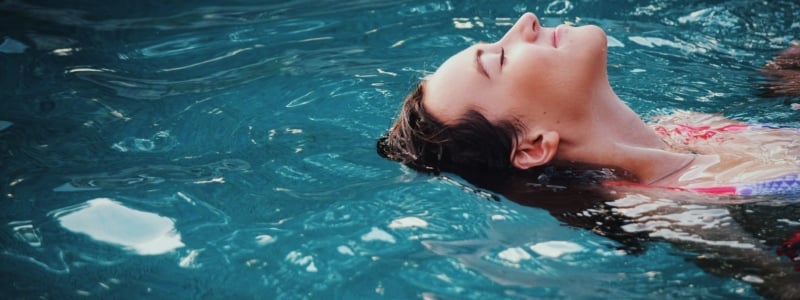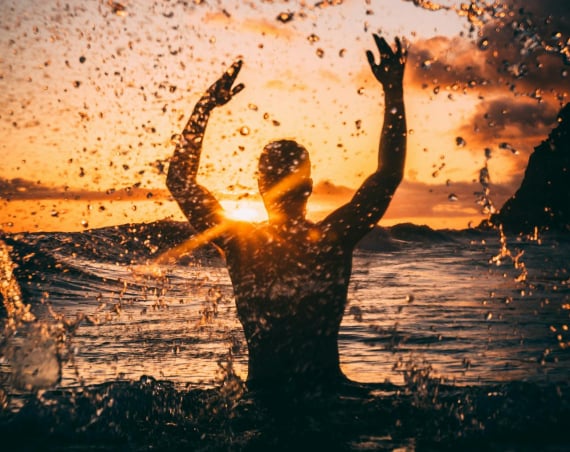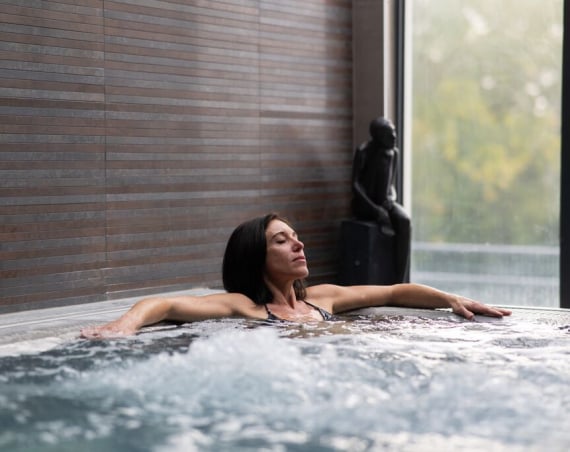While plunge pools have been around since the famous Roman baths, cold water therapy is having a real moment. There’s increased interest in the benefits of cold water immersion, and believe it or not, time spent in a plunge pool can be just as relaxing as a steamy sauna or a bubbly whirlpool. Learn why — and how — you should consider adding a cold plunge to your wellness routine, whether that’s taking a dip after exercise or building it into your spa time.
Key takeaways
Want the quick version? These are the key points.
- Cold plunge pools can boost energy, ease muscle soreness and lift your mood through endorphin release.
- Regular immersion may strengthen immunity, aid recovery and reduce inflammation after tough workouts.
- Start small: cold showers and breathwork build tolerance before moving into full plunges.
- Keep sessions short — 2–5 minutes at first, working up gradually to a maximum of 10.
- Those with heart or blood pressure concerns should seek medical advice before trying it.
- Pairing cold plunges with sauna, steam or massage enhances relaxation and recovery.
- Always listen to your body and respect your limits for safe, lasting benefits.
What is a plunge pool?
A plunge pool is a small pool filled with cold water for a refreshing dip. They take up about as much space as a whirlpool and are about relaxing rather than swimming.
Plunge pool and cold water therapy benefits
Spending time in chilly waters can be a great way to speed up your body’s recovery after tough workouts – cold water therapy is used by pro athletes to rebound after matches and training. The current research on cold water therapy is not comprehensive, but some studies suggest the benefits of cold plunges include:
- Boosting your energy: Cold water stimulates blood flow and can provide an invigorating pick-me-up.
- Alleviating muscle soreness: Cold plunges can reduce swelling and inflammation.
- Aiding overall mental health: A quick dip in cold water has been shown to release feel-good chemicals, like endorphins, and can boost your mood according to a 2020 study.
- Stimulating immune system health: According to a 2022 cold water immersion research review, there have been promising signs that cold water can help strengthen your immune system.
- Speeding up recovery: After high-intensity exercise, cold water immersion can help regulate heart rate and facilitate a quicker cool down according to a 2019 study with cyclists.

How to use a plunge pool at the spa?
How to start using a plunge pool?
You can start with some light activities to prepare you for the time in a plunge pool. Begin with some cold showers at home. After a regular shower, turn down the temperature and stand in the cold water for a couple of minutes—no more than five minutes total. Knowing how to use breathwork can also help you adapt to chilly temperatures. Take time to breathe deeply and slowly, and try counting while you breathe to keep an even pace. Intentional breathing can help you stay self-aware of how your body feels and know your limits.
If you have any underlying health conditions, the very first thing you should do before using a plunge pool is to have a chat with your GP. Cold water immersion does have an impact on the circulatory system, so it can be risky for people with blood pressure issues, heart conditions, or other circulatory conditions. If your GP advises against it, do not do cold water therapy.
How long should you stay in a plunge pool?
Plunge pools used for cold water therapy are kept at a brisk ten to twelve degrees Celsius. For comparison, a nice warm bath at home ranges from 37 to 40 degrees Celsius. Sounds quite chilly, but you don’t have to tough out the cold for long. You should limit your time in the water to ten minutes maximum. Keeping early sessions short at around two to five minutes can help build up your tolerance to the cold.
How do plunge pools fit into your time at the spa?
Cold water therapy can be combined with other spa facilities to promote relaxation, and reduce muscle soreness and fatigue:
Steam and sauna first, plunge pool second
Renew and relax by combining time in a plunge pool with other spa treatments. Beginning in a warm steam room or sauna starts the process of soothing achy muscles and joints. Following the warm-up with a brief dip in a cooling plunge pool then stimulates muscle recovery and is incredibly refreshing.
Pair cold plunges with a massage
Not keen on sauna or steam? Taking a dip in a plunge pool after a massage session is a great way to reduce aches from muscle inflammation without spending time in hot temperatures.
Add plunge pool time after workouts
Of course, you can also use the plunge pool on its own, particularly if you’ve just had a workout. Hitting the plunge pool right after exercising can help kickstart your body’s recovery process so you can avoid lingering soreness after challenging sessions. Just make sure you shower first if you’re getting in after the gym!
Feeling inspired? We have a range of different spa facilities at David Lloyd Clubs designed to boost your wellness.




